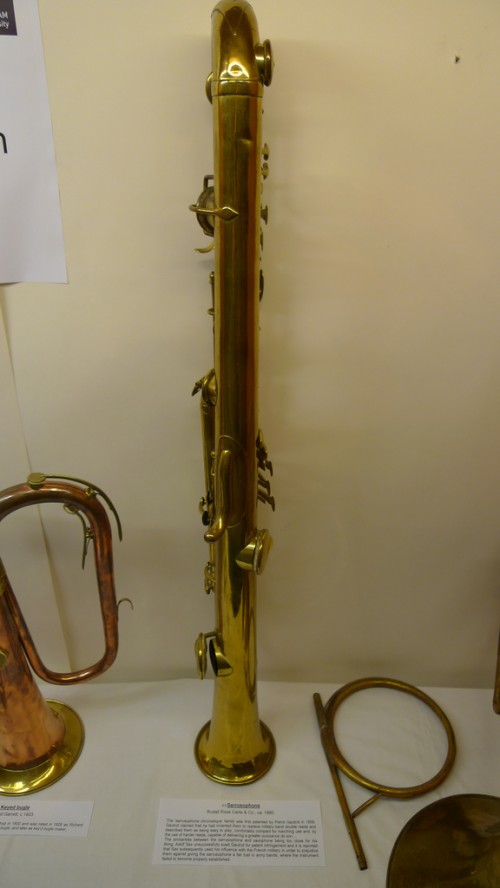I happened to came across these photos by acb last night. I have always been intrigued by both of these rarities, which are part of the Birmingham Conservatory’s collection of vintage instruments.
Serpent
Photography by acb Source: Flickr
Sarrusophone
Photography by acb Source: Flickr
acb writes (presumably in response to the writeup of the sarrusophone provided by the Birmingham Conservatory)…
In a parallel universe, they still make these, while the saxophone is all but forgotten.
Yeah, sure… I like the sarrus fine. I like the rothophone too, but I ask you: What kind of worm hole would you have to go through to find a parallel universe were either one would trump a sax? :devil1:
BTW, in case you’re curious what the text says, there is an enormous-sized version of this photo available for download as well, and the text is completely legible. The sarrus in this photo was made by Rudall Rose Carte & Co. circa 1880.
This text also provides a bit of history about sarrusophones in general. It states that Adolf Sax believed that the sarrus was a patent infringement on his saxophone. Therefore, he unsuccessfully tried to sue the patent holder of the sarrusophone, Pierre Gautrot. When that failed, Sax used his influence with the French military bands to prejudice them against the sarrusophone. Thus the sarrus was never given a fair trial, and never became properly established.






Actually what I found interesting is if you do a search on Google for serpent, you find more on it than you do on the sarrusophone. What’s that about? 😡
Serpent has a long history, especially as the bass accompaniment to church music. For much of its history, there was nothing better or even equivalent to compare it to. It was eventually supplanted first by ophicleide, then by tuba, but it was a long time in coming. Also, it influenced the development of the ophicleide heavily. Ophicleide is a far superior instrument but the concept remains the same — a long cone with holes in it, played by buzzing the lips.
Sarrusophone, on the other hand, was marketed as a replacement instrument from the very beginning. It doesn’t have the volume and tone of a saxophone, nor does it have the range and flexibility of a bassoon or bass clarinet. Its niche was relatively small, as was its time in the limelight. It does not have any descendants to speak of, except perhaps a very weak connection to the Tubax. I think the Tubax probably would have been invented even if there were no sarrusophones.
I can’t say the world is any lesser for the death of the serpent. Ophicleide, on the other hand, can be a beautiful instrument and deserves more representation.
Sarrusophones have one big thing going for them, which is that they can be built in very low pitches without weighing a ton. That’s probably why the smaller ones never really got anywhere — larger bore instruments are still practical. But once you get down into the bass and contrabass range, and have to march with the damn thing hanging on your neck, they start to look REALLY attractive.